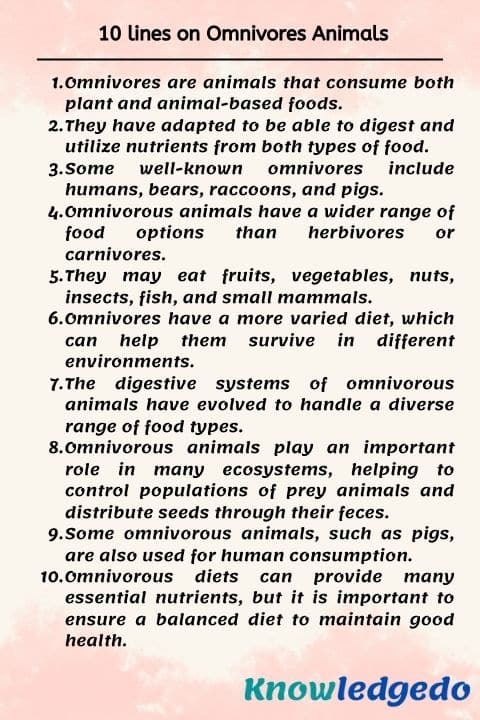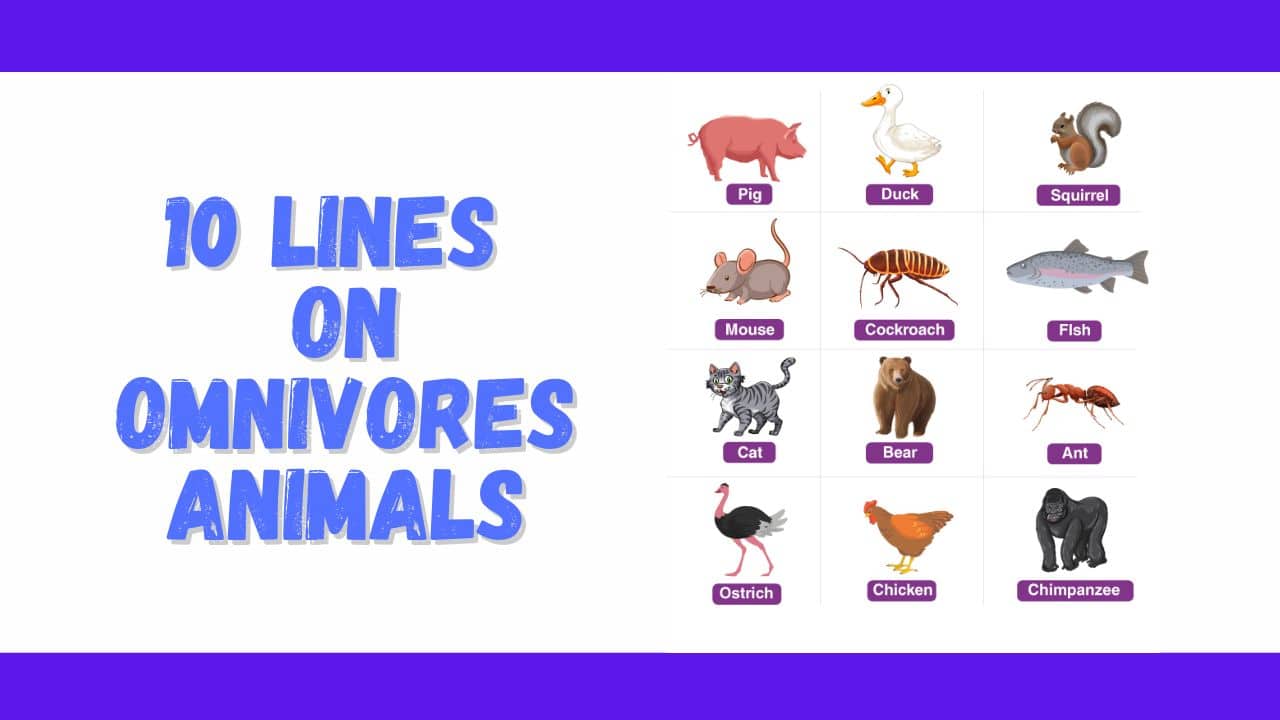Today, we are sharing 10 lines on Omnivores Animals in English. This article can help students who are looking for information about 10 lines on Omnivores Animals. This Lines is very simple and easy to remember. The level of these Lines is moderate so any student can write on this topic.
This article is generally useful for class 1,class 2,class 3,class 4,class 5,class 6,class 7,class 8,class 9,class 10,class 11,class 12
10 lines on omnivores animals
1) Omnivores are animals that consume both plant and animal-based foods.
2) They have adapted to be able to digest and utilize nutrients from both types of food.
3) Some well-known omnivores include humans, bears, raccoons, and pigs.
4) Omnivorous animals have a wider range of food options than herbivores or carnivores.
5) They may eat fruits, vegetables, nuts, insects, fish, and small mammals.
6) Omnivores have a more varied diet, which can help them survive in different environments.
7) The digestive systems of omnivorous animals have evolved to handle a diverse range of food types.
8) Omnivorous animals play an important role in many ecosystems, helping to control populations of prey animals and distribute seeds through their feces.
9) Some omnivorous animals, such as pigs, are also used for human consumption.
10) Omnivorous diets can provide many essential nutrients, but it is important to ensure a balanced diet to maintain good health.

5 lines on omnivores animals
1) Omnivorous animals have a diet that consists of both plant and animal-based foods.
2) This type of diet provides them with a wide range of nutrients and energy sources.
3) Examples of omnivorous animals include humans, bears, raccoons, and certain species of birds and fish.
4) Omnivores have adapted to be able to digest and utilize nutrients from both plant and animal-based sources.
5) Their diet can vary depending on factors such as their environment, seasonal availability, and individual preferences.
FAQ
Answer: An omnivorous animal is a creature that consumes both plant-based and animal-based foods.
Answer: Some examples of omnivorous animals include humans, bears, raccoons, pigs, chickens, certain species of fish and birds, and many primates.
Answer: Omnivores have a wider range of food options, which can help them survive in different environments. Their diet can provide many essential nutrients and energy sources, and they can also play an important role in many ecosystems by controlling populations of prey animals and distributing seeds through their faeces.
Answer: While an omnivorous diet can provide many essential nutrients, it is important to ensure a balanced diet to maintain good health. Overconsumption of animal-based foods can lead to health problems such as heart disease and high cholesterol. It is also important to consider the environmental impact of animal agriculture and make sustainable food choices.
